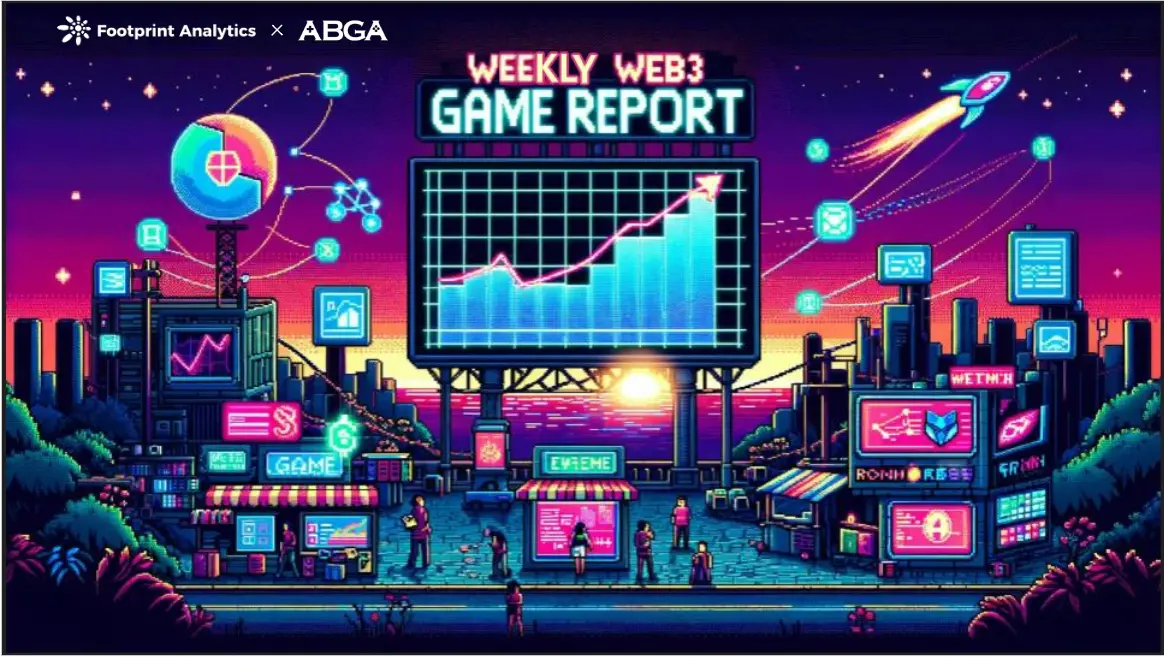LK Venture Research Report: In-depth Analysis of Full On-chain Game's Past, Present, and Future
Author: Cynic, LK Venture Researcher
TL;DR
- What is a full on-chain game?
- Challenges and solutions faced by full on-chain games
- Why do we need full on-chain games?
- What chains are suitable for full on-chain games?
- What games are suitable for full on-chain?
- The past of full on-chain games: decentralization, trustlessness, let’s open a casino here
- The present of full on-chain games: high-performance public chains make full on-chain games a realistic option
- The future of full on-chain games: from full on-chain games to on-chain society?
What is a full on-chain game?
A full on-chain game refers to a game where the game logic and data are completely stored on the blockchain. The operation and interaction of such games are based on smart contracts, allowing for the full advantages of blockchain technology, including decentralization, trustlessness, verifiability, transparency, and traceability.
Full on-chain games correspond to partial on-chain games. Partial on-chain games only store some game elements (such as game assets, transaction records, etc.) on the blockchain, while the game logic and data processing still rely on traditional centralized servers.
Partial on-chain games can be further divided into core logic on-chain, asset on-chain, and achievement on-chain based on the content that is on-chain.
Core logic on-chain generally involves storing key data and algorithms of the game on the blockchain, ensuring fairness and transparency. For example, placing the random number generator (RNG) or combat result calculation logic on-chain can prevent cheating and manipulation. Alternatively, placing parts of the game's economic system on-chain can allow for more diverse and innovative incentive mechanisms. For instance, players can earn token rewards through mining, staking, or participating in in-game activities.
By placing assets on-chain, virtual items, characters, or other resources within the game are typically represented as non-fungible tokens (NFTs) or fungible tokens (FTs), allowing players to own, trade, and manage these assets, providing economic benefits and incentivizing players to participate in the game ecosystem.
Achievement on-chain usually refers to players unlocking certain achievements in the game, which can be registered on-chain as proof of their gaming level and can serve as a certificate for subsequent airdrops, but cannot be directly traded. Compared to asset on-chain, achievement on-chain provides much less economic incentive for players, but it also brings the game back to its essence: "After all, the most important thing about a game is that it is fun."
 Types of games defined by the degree of on-chain
Types of games defined by the degree of on-chain
Challenges and solutions faced by full on-chain games
Since the concept of full on-chain games was proposed, it has not yet been widely adopted. LK Venture summarizes that there are many issues at the practical level:
1. Performance and scalability issues: The processing capacity of blockchain networks is relatively limited, especially in terms of transaction throughput and confirmation speed. Full on-chain games may lead to network congestion and delays, affecting the gaming experience. To address this issue, developers need to explore scalability solutions such as sharding technology, state channels, and layer two scaling.
2. Transaction costs: Every operation in a full on-chain game needs to be submitted as a transaction to the blockchain, which incurs corresponding fees (such as Ethereum's Gas fees). If transaction costs are too high, it may limit player participation and the playability of the game. Reducing transaction costs requires considering methods such as optimizing transaction structures and using more energy-efficient consensus algorithms.
3. User experience: Compared to traditional games, full on-chain games may face challenges in user experience. For example, users need to understand and use cryptocurrency wallets, handle private keys and transactions, which may present a certain barrier and learning cost for ordinary users.
4. Privacy issues: Due to the public and transparent nature of blockchain, player data and transaction information in full on-chain games may face the risk of privacy breaches. Protecting player privacy requires the use of technologies such as zero-knowledge proofs and privacy computing, but these technologies may further increase system complexity and development costs.
5. Game design limitations: Due to the performance limitations of blockchain technology, full on-chain games may not be able to implement complex game mechanics and real-time interactions. This means that full on-chain games may be limited in game types and gameplay, making it difficult to adapt to high-performance game types such as large-scale multiplayer online games and action games.
High-performance Layer 1 and the recently popular Layer 2 are expected to reduce transaction costs and improve confirmation speeds, effectively alleviating issues 1 and 2.
Account abstraction (AA) can lower user barriers and address issue 3. ERC-4337 passed audit on March 2, 2023, and is deployed on the mainnet, indicating that large-scale use of account abstraction is imminent.
Zero-knowledge proof technology has been proven to effectively protect privacy, addressing issue 4. As for issue 5, do we really need to put all types on-chain? The answer is probably no.
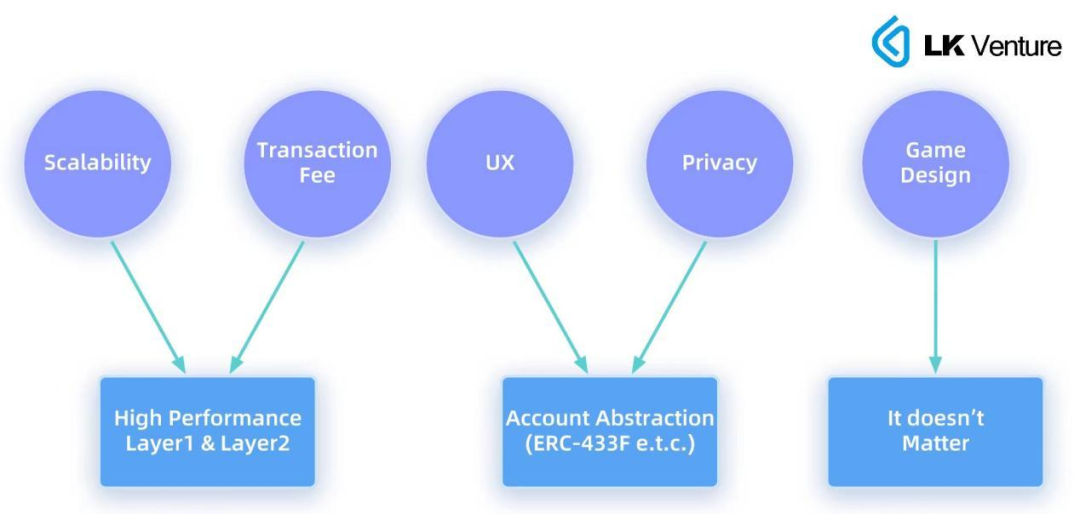 Main challenges faced by full on-chain games and proposed solutions
Main challenges faced by full on-chain games and proposed solutions
Why do we need full on-chain games?
With so many issues still existing in full on-chain games, why do we need them? This question is somewhat akin to asking why we need permissionless blockchains.
LK Venture believes that the market demand for full on-chain games can be understood from the following aspects:
1. A decentralized game world, open to everyone: Full on-chain games eliminate reliance on centralized servers, making game operation more decentralized. This can increase system security and censorship resistance, reducing the risk of dependence on a single organization or individual.
2. Trustless and verifiable game fairness: Since game logic and data are stored on the blockchain, game rules and states are transparent to everyone. This allows players to verify the fairness of the game and the correctness of the results, increasing the credibility of the game.
3. Not just usage rights, but ownership: Full on-chain games can use non-fungible tokens (NFTs) to represent in-game items and characters, allowing players to truly own and control these assets. This ownership can incentivize players to participate in the game while providing them with real-world value and rewards.
4. One-time on-chain, permanent operation: Since game states and logic are stored on the blockchain, full on-chain games have high sustainability. Even if the original developers no longer support the game, as long as the chain continues to produce blocks, the game can continue to operate and develop.
5. Community-driven, contributing to the community: Full on-chain games achieve community-driven development and governance through smart contracts and decentralized autonomous organizations (DAOs). This allows games to better adapt to player needs and market changes, increasing the game's lifecycle and appeal.
6. Open collaboration, user creation drives game iteration and evolution: Open-source code and open systems promote open collaboration among individuals. With the assistance of AI large models, users' creative energy will be fully unleashed, and UGC or AIGC content will bring more diverse, richer, and more exquisite gaming experiences.
 Analysis of market demand factors for full on-chain games
Analysis of market demand factors for full on-chain games
What chains are suitable for full on-chain games?
LK Venture compares various chains based on TPS, confirmation time, transaction costs, security, independence, etc., creating a five-dimensional chart, with a maximum score of 5.
 Comparison of parameters of major public chain infrastructures for full on-chain games
Comparison of parameters of major public chain infrastructures for full on-chain games
The primary prerequisite for full on-chain games is excellent transaction performance. Short confirmation speeds can provide a better gaming experience, and a good ecosystem can provide supporting infrastructure for games. Security is crucial for protecting game assets, and independence ensures that games are not affected by other on-chain events that could cause network congestion.
There is no silver bullet in the real world; various solutions have their advantages and disadvantages, and game projects can choose based on their design characteristics.
What games are suitable for full on-chain?
LK Venture believes that full on-chain games should leverage their advantages of being fully on-chain, rather than simply migrating operational logic to the chain. In other words, it should not be full on-chain for the sake of being full on-chain; full on-chain is a means, not an end.
What types of games can leverage the advantages of blockchain? LK Venture identifies two types as most suitable.
One is multi-party games (MPG) that utilize the public, transparent, and verifiable nature of blockchain. Interestingly, "Game" can refer to both a game and a competitive interaction.
Multi-party means that the game is not a single-player experience; it involves interaction between people rather than just between a person and fixed game logic. Permissionless blockchains allow everyone to participate in the game.
Competition means that the parties are adversarial. Through full on-chain, we ensure the fairness of the game, and the public, transparent, and verifiable nature of blockchain prevents game designers from manipulating results.
The most direct MPG is gambling, and broadly speaking, various board games and turn-based strategy games can also fall under the MPG category. The characteristic of MPG is that the number of interactions is relatively low, testing players' thinking abilities rather than reaction speeds, with adversarial parties obtaining a fair judgment through blockchain.
The other type is user-generated games (UGG) that utilize blockchain's openness, autonomy, and ownership.
In this type, the initial game designers only set a minimal core rule set, allowing users to unleash their imagination and creativity based on this core rule set, exploring various types of gameplay. With the support of AI large models, users can more easily bring their creativity to life and gain rewards from the blockchain's verification of their creativity.
There are no centralized organizations; in UGG, there are only individuals collaborating with each other. True autonomy distributes governance power to everyone, representing the broadest form of democracy. If one is dissatisfied with the initial designer's core rule set, they can modify it and deploy a new contract at any time, creating a new world.
Starting from the smallest seed, with the support of positive feedback loops, the game will ultimately grow into a towering tree.
The past of full on-chain games - Decentralized, trustless gambling market
On November 1, 2008, Satoshi Nakamoto published "Bitcoin: A Peer-to-Peer Electronic Cash System." On January 3, 2009, the Bitcoin genesis block was born. As Bitcoin transactions gradually became known to the public, people began to use it for online gambling. In 2012, the first Bitcoin-based gambling game, SatoshiDice, emerged.
SatoshiDice is a simple gambling game based on the Bitcoin blockchain, where players send Bitcoin bets to the game, which returns win/loss results based on pre-set odds and a random number generator. At this stage, blockchain gambling games were mainly limited to the Bitcoin ecosystem, and the types of games were limited.
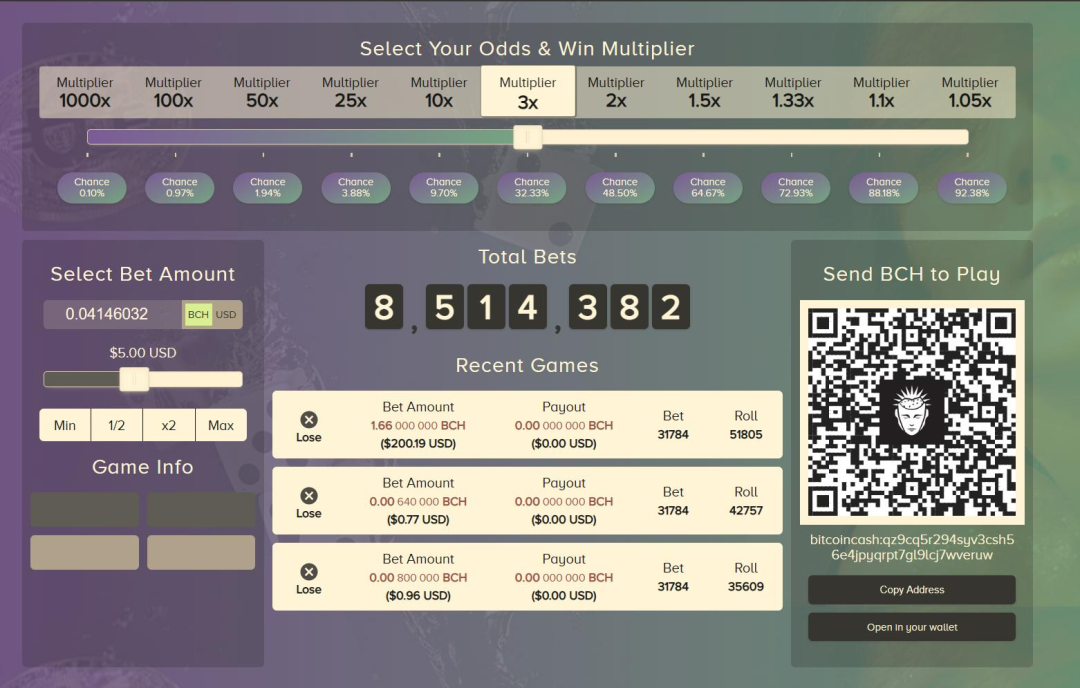 Screenshot of Satoshi Dice game homepage
Screenshot of Satoshi Dice game homepage
In 2013, the Ethereum project was launched, and its smart contract functionality had a significant impact on blockchain gambling games. In 2015, the Ethereum mainnet went live, and blockchain gambling games began to shift from Bitcoin to Ethereum. Utilizing Ethereum's smart contract technology, developers could create more complex and interactive gambling games. During this phase, many Ethereum-based gambling games and platforms emerged, such as vDice and Etheroll.
In May 2014, Kevin McCoy and Anil Dash created the first known NFT. In 2017, CryptoKitties, as the first Ethereum-based non-fungible token (NFT) game, successfully attracted a large number of users. The NFT technology had a profound impact on the development of blockchain gambling games. NFTs can be used to represent unique assets within the game, such as limited-edition gambling props or virtual tokens, and more gambling games began to adopt NFT technology.
In the summer of 2020, DeFi Summer erupted, and decentralized finance (DeFi) began to rise, ushering blockchain gambling games into a new development phase. Gambling games began to integrate with DeFi projects and platforms, providing players with richer financial functionalities such as liquidity mining, staking, and lending.
During the same period, the public chain track experienced explosive growth, with chains like BSC, Polygon, Solana, and Tron optimizing for Ethereum's transaction cost issues, providing players with faster and cheaper transaction experiences.
As the blockchain gambling game market gradually matured, some innovative game types and gameplay also emerged. For example, prediction market platforms like Augur and Gnosis allow players to bet on the outcomes of future events. These platforms use smart contracts and blockchain technology to create a fair, transparent, and trustless gambling environment.
Gambling games were, in fact, the first games on the blockchain. They are inherently full on-chain, as comparing sizes and guessing numbers are merely mathematical calculations, and verifiability can be achieved through simple hash functions. Learning from history can inform future developments. Although most people have a negative impression of gambling, one should not forget that full on-chain games started from here.
The present of full on-chain games - High-performance public chains make full on-chain games a realistic option
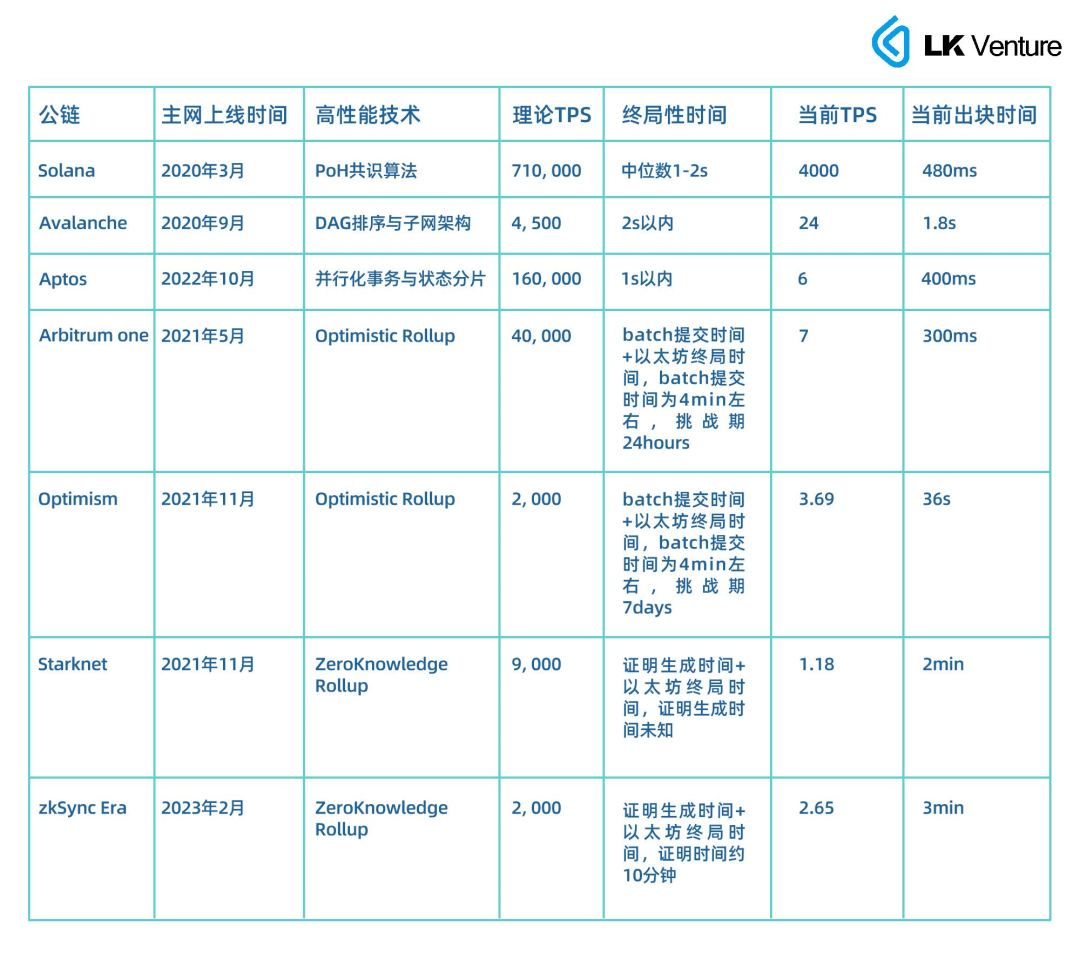 Comparison of some high-performance public chains
Comparison of some high-performance public chains
With the rise of various high-performance Layer 1 and Ethereum Layer 2 scaling solutions, full on-chain games gradually have a feasible practical foundation. The exploration of full on-chain games has deepened further, with the emergence of the Dark Forest game marking a milestone in the development history of full on-chain games.
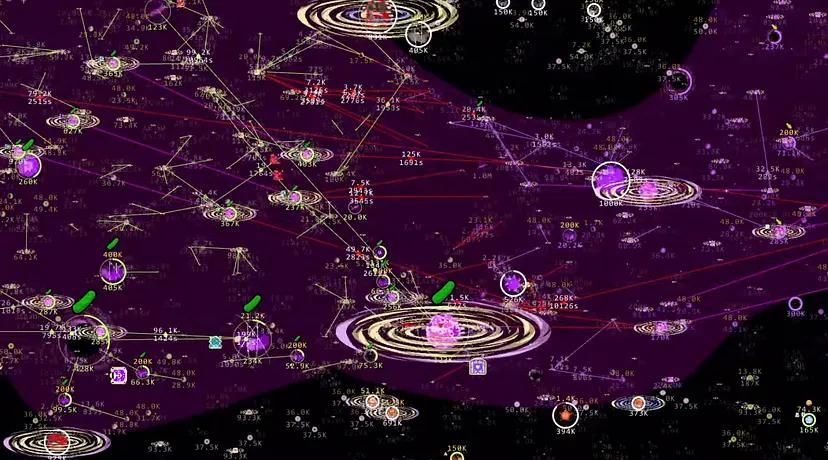 Screenshot of Dark Forest game
Screenshot of Dark Forest game
Dark Forest is the first full on-chain incomplete information game, utilizing the public, transparent, and verifiable attributes of blockchain while using ZK-SNARKS technology to hide information that affects the gaming experience, achieving incomplete information games and recreating the environment of the "dark forest" from "The Three-Body Problem" on-chain.
As an open MMO strategy game, Dark Forest encourages players to create gameplay both in and out of the game, thus giving rise to a large community ecosystem. Some individuals have united to form guild organizations, making significant contributions in plugin development, game exploration, and event planning. As a real-time strategy full on-chain game, every interaction by players is presented on-chain through contract calls and is updated in real-time between different players. The "fog of war" achieved through ZK-SNARKs technology simulates incomplete information games by obscuring players' vision, recreating the dark forest environment.
Dark Forest has proven the feasibility and playability of full on-chain games, truly opening the door to full on-chain games thereafter.
Major public chains are nurturing the full on-chain game track, but the most active is Starknet. On Starknet, several full on-chain games such as LootRealms, GO L2, Isaac, and Unstoppable Games have emerged, gaining significant attention. However, considering the currently high Gas fees on Starknet, the mainnet launch of these games remains a distant prospect.
From the overall trend of current game projects, there are two game themes: one is strategy-based competitive games similar to Dark Forest, and the other emphasizes financial attributes in casual mini-games. Given the still high Gas fees, only substantial economic incentives may encourage people to participate in the games. From this perspective, the latter may see a faster mainnet launch.
The future of full on-chain games - From full on-chain games to on-chain society?
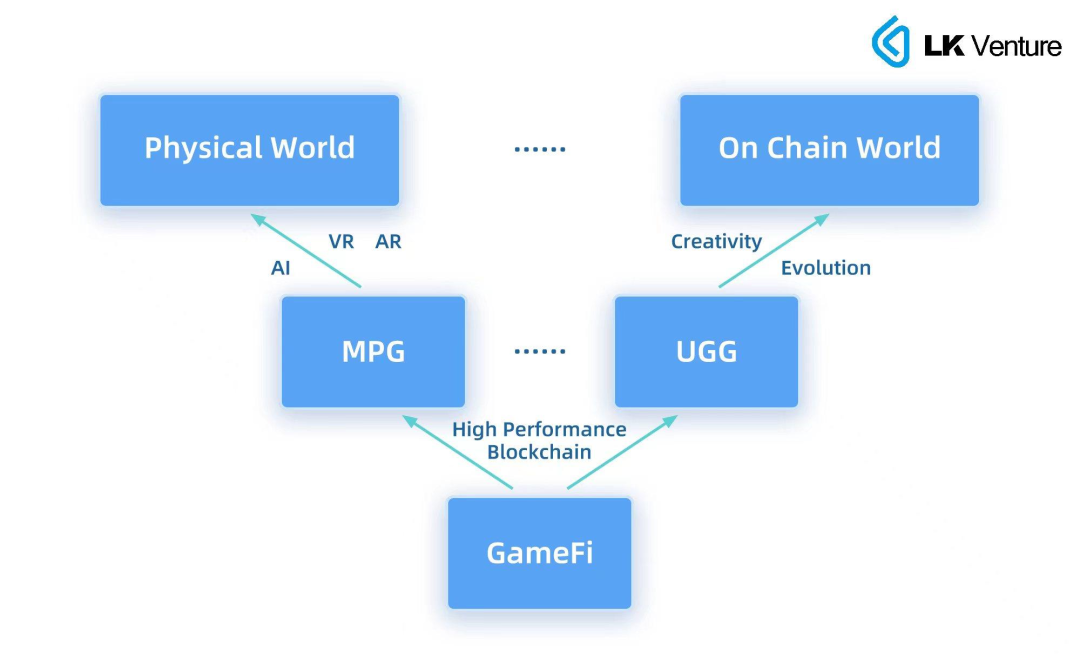 Evolutionary map of the full on-chain game ecosystem
Evolutionary map of the full on-chain game ecosystem
In the short term, the role of Ethereum scaling solutions led by Rollup remains limited, and being anchored on Ethereum will be negatively impacted by other financial activities on Ethereum (for example, during significant price fluctuations in the crypto market, MEV bot attacks can lead to spikes in Gas). For more complex full on-chain games, the costs remain too high, making it difficult to attract users based solely on gaming experience. Meanwhile, high-performance Layer 1 chains have limited developer numbers due to their non-EVM compatibility and lack of a large user base.
Therefore, in the short term, GameFi, which offers higher economic incentives to players, may dominate.
In the medium term, we believe that Ethereum's unipolar status will be broken, and more high-performance Layer 1 chains will attract a large number of users due to lower costs and better experiences. The technology of ZK-Rollup will mature, truly reducing Gas fees to levels comparable to traditional world transactions. More customized dedicated chains will emerge to avoid network congestion caused by unrelated time. On this basis, various complex full on-chain games will be truly deployed on the mainnet, exploring more possibilities for full on-chain games in practice.
In the long term, games that start from entertainment may generate real value. The interaction records of each player in the game, the process of competition, could serve as materials to train AI, benefiting real life. The blockchain's verification allows each user to control their data, gaining benefits from on-chain interactions. For example, a player's reactions in a racing game could better train autonomous driving systems, providing many boundary scenarios that are difficult to encounter in real life. The emergence of UGG will gradually align games with social ecosystems.
After all, human society is built through exploration and creation among individuals under a set of core natural laws. Who can say that a social ecosystem cannot develop on-chain?
|About LK Venture
LK Venture is a crypto investment and research institution under Blueport Interactive (08267.HK), focusing on the Web3 field. Formerly known as Consensus Lab, it emphasizes investment in cutting-edge infrastructure, trading platforms, technology protocols, and financial tools, having invested in over a hundred projects from North America, Asia, Europe, including FTX, Polkadot, Filecoin, Casperlabs, Coin98, and more.






